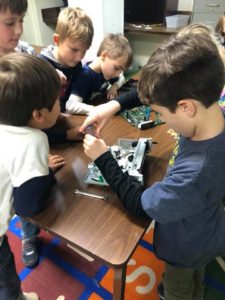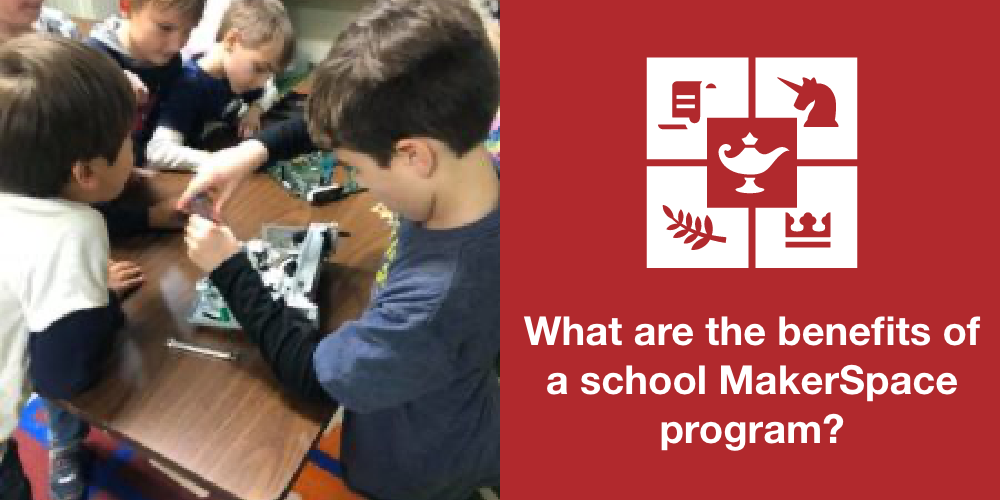 MakerSpaces are making waves at schools from coast-to-coast these days.
MakerSpaces are making waves at schools from coast-to-coast these days.
A MakerSpace is a dedicated spot in a classroom or library where students can create, tinker, build, and solve problems in a hands-on way.
And as the saying goes…tinkers are thinkers.
Whether they are building something entirely from their own imaginations or creating something with a very specific schematic to follow, the possibilities for learning in this type of environment are endless.
Research shows that MakerSpaces benefit children of all ages, from the youngest grades to high schoolers where many students then progress to more sophisticated building in robotics and STEM programs.
Four key benefits of a MakerSpace curriculum include:
- Development of problem-solving skills and perseverance. Students may not always get their invention to work on the first try, forcing them to discover other ways in which to find success.
- Fosters community and teamwork. Many MakerSpace assignments encourage children to work together on a team to complete a project, so they must learn how to get along and interact flexibly with one another.
- Gets the blood flowing and boosts brain power. Physical activity and breaks during the school day — even just by standing and actively using hands — can enhance learning and improve focus and attention in the classroom later on.
- Teaches about recycling. MakerSpaces are typically equipped with a combination of newer items but also old, discarded, and broken things too that have the potential of being repurposed in a meaningful way.
Kirby Hall School has dedicated MakerSpace time for each grade and explores topics such as origami, computer coding, 3D modeling, urban planning, and game design.
Since 1976, Kirby Hall School has been leaving a legacy of academic success in a loving, nurturing environment for children in PreK-4 through 12th grade. To learn more about Kirby Hall in Austin, Texas, or to schedule a tour, please visit us here.
(Adapted from the School Library Journal)







